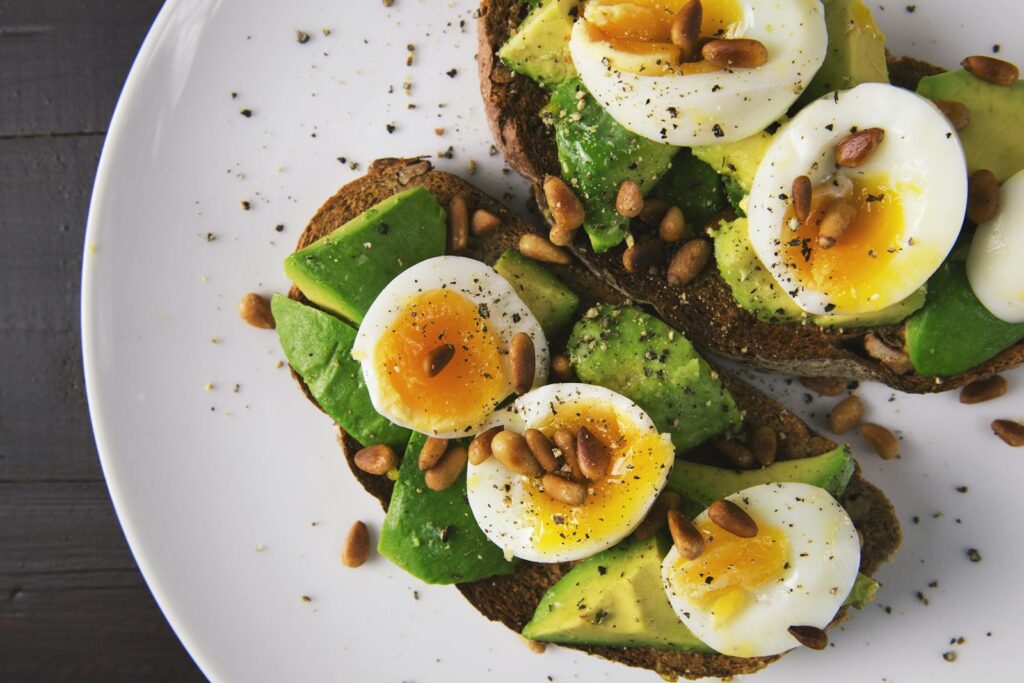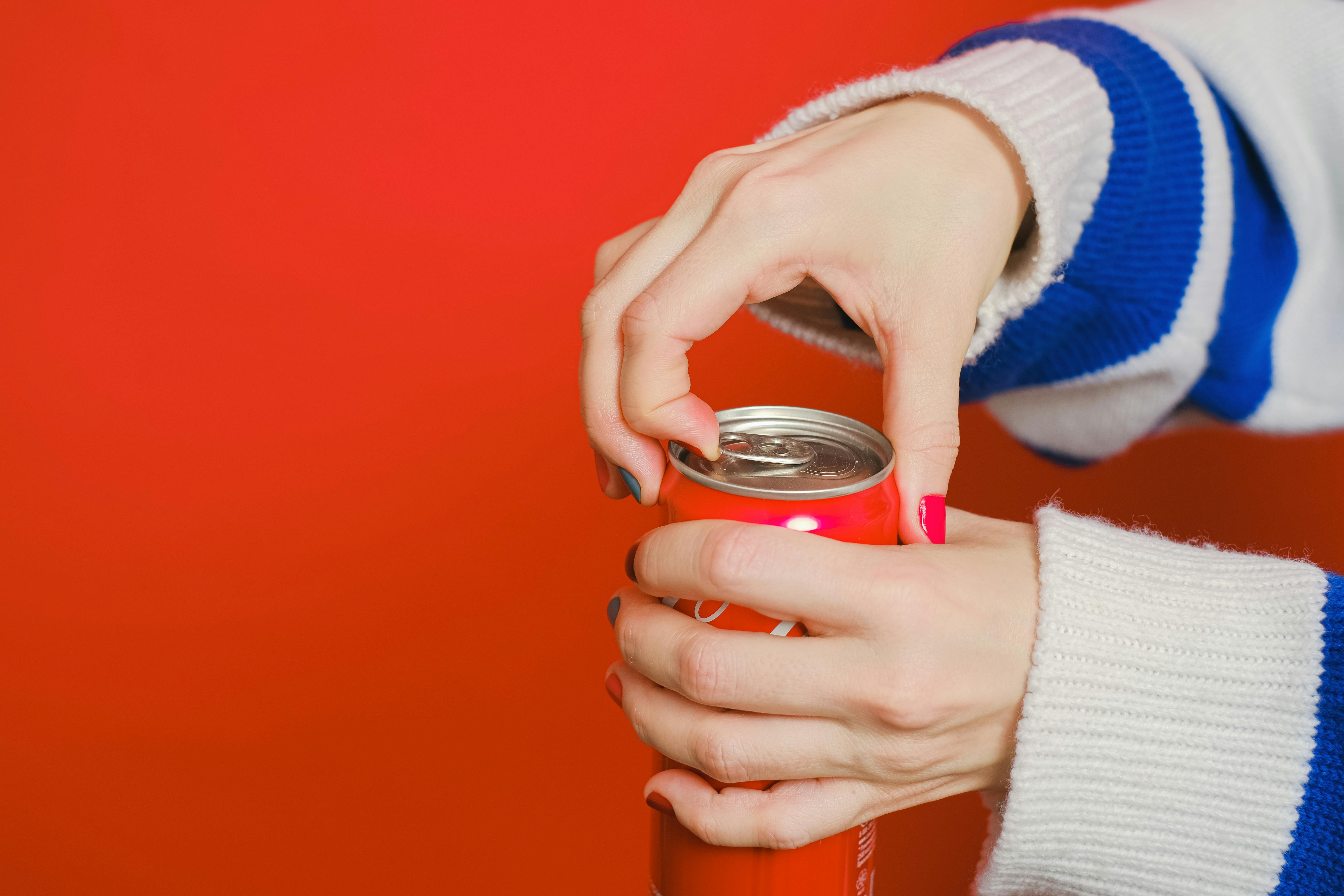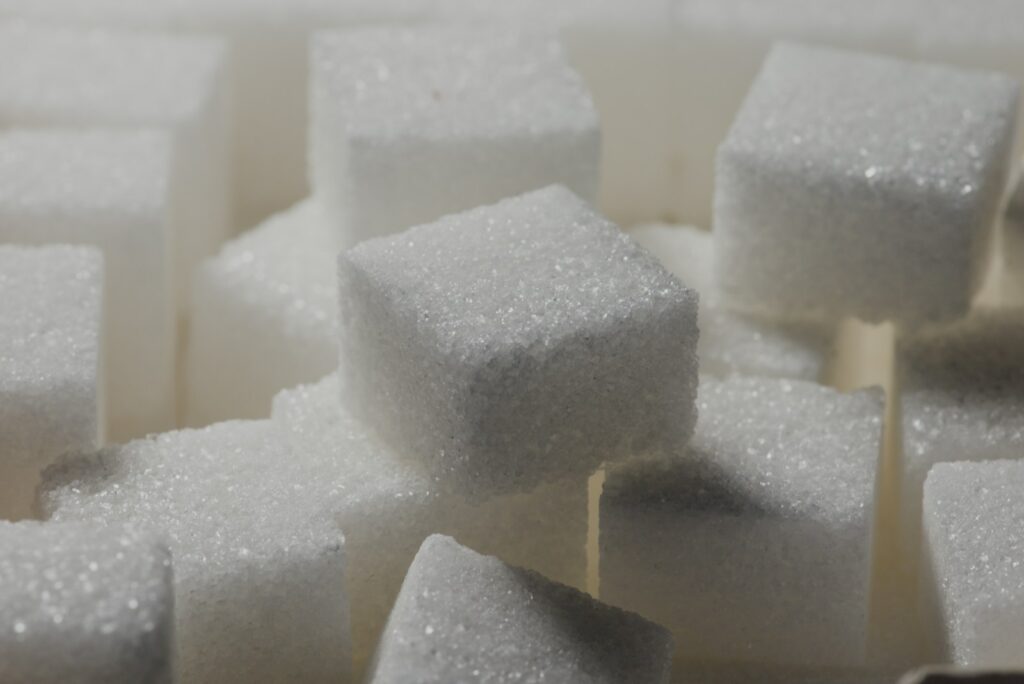
Ever feel like you’re doing everything right when it comes to healthy eating, only to find your efforts aren’t quite paying off? You’re not alone! It turns out, some of our most beloved and seemingly wholesome foods are actually playing a sneaky game, loaded with hidden sugars that can derail our best intentions without us even realizing it. While we’ve all been trained to eye candy and sodas with suspicion, the real saboteurs are often lurking in unexpected corners of our kitchens and grocery aisles. Get ready for a revelation that might just change the way you shop and snack forever!
This isn’t just about avoiding a sweet tooth; it’s about safeguarding your health. According to the American Heart Association, men should aim to limit their intake of added sugars to no more than 9 teaspoons (or 36 grams), while women should cap it at 6 teaspoons (or 25 grams) daily. Exceeding these recommendations isn’t just a minor slip-up; it’s linked to a whole host of health issues, from weight gain and heart disease to type 2 diabetes and even joint pain. Danielle VenHuizen, MS, RDN, a Seattle-based dietitian, warns that “large amounts of sugar can disrupt the flora in our gut, causing imbalances that affect digestion and overall health,” promoting inflammation and allowing harmful bacteria to thrive. Scary, right?
But here’s the good news: knowledge is power, and we’re about to arm you with a super-tool – the ability to spot these sugar saboteurs! It’s truly wild how many sneaky places sugar hides and all the different names it can go by on ingredient labels. So, let’s embark on an eye-opening journey through 15 popular foods that are secretly packed with sugar. You’ll gain crucial insights to make more informed choices, helping you navigate the grocery store with confidence and truly take control of your nutrition and long-term health.
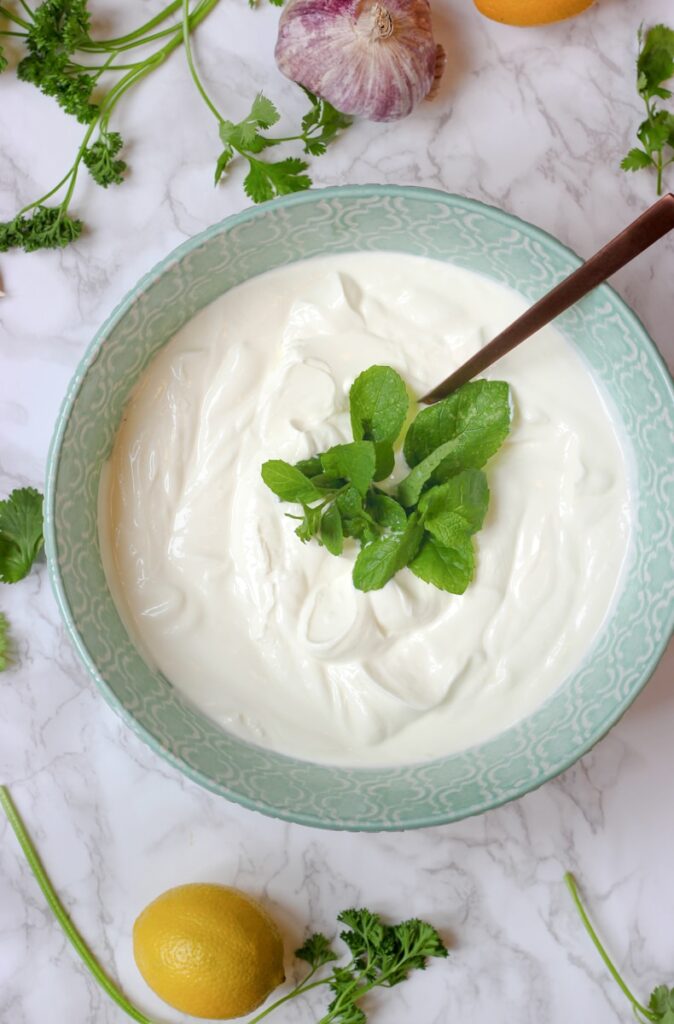
1. **Yogurt**Ah, yogurt! It’s often championed as a beacon of health, overflowing with probiotics, calcium, and all those good-for-you nutrients that promise a happy gut. You grab a cup, feeling virtuous, believing you’re making a fantastic choice for your breakfast or snack. It’s plastered with images of vibrant fruit and claims of being a wholesome treat, a dairy alternative that’s a cornerstone of a balanced diet.
However, this seemingly innocent health food can be a total sugar wolf in sheep’s clothing, especially the flavored varieties. Many brands pack a surprising punch of added sugars to make them taste extra delicious. Some popular brands, as noted in the context, can contain up to 20 grams of sugar per serving, which is almost equivalent to the sugar content found in a full-sized candy bar. The USMC MCCS explicitly states that “flavored yogurt can be full of hidden sugars, especially the ‘fruit-on-the-bottom’ varieties, which can contain as much sugar as a candy bar.”
Even those low-fat yogurts, often marketed as a healthier alternative, can be incredibly misleading due to their sugar content. The USDA’s findings show that a serving of plain low-fat yogurt can contain up to 18 grams of sugar. This amount is alarmingly close to what you’d find in some sugary soft drinks, creating a significant sugar intake without you even realizing it, particularly when you’re choosing it specifically for its perceived health benefits.
So, what’s a health-conscious yogurt lover to do? The best move is to ditch the flavored tubs and reach for plain, unsweetened yogurt – particularly full-fat or Greek yogurt, which also offers more satiety. This way, you’re in complete control of the sweetness. Try adding your own fresh fruit, a drizzle of honey, or a sprinkle of cinnamon to create a truly healthy and delicious snack that won’t send your blood sugar levels on a rollercoaster ride.
Read more about: Unlock Your Pantry’s Potential: 15 Simple Steps to Start Your Food Preservation Hobby

2. **Instant Oatmeal**For many of us, instant oatmeal is the ultimate breakfast hero: quick, convenient, and seemingly wholesome. You tear open a packet, add hot water, and voilà – a warm, hearty start to your day in minutes. It’s often thought of as a solid, heart-healthy choice, packed with fiber and beneficial antioxidants, making it a go-to for busy mornings.
But here’s the sticky truth: those delightful flavored varieties of instant oatmeal often come with a hidden sugar load that can sabotage your health goals right from the get-go. Manufacturers frequently add sugars to enhance flavor, turning a potentially healthy meal into a sugary surprise. Danielle VenHuizen, MS, RDN, highlights this issue, stating that “most packaged oatmeal packets are loaded with sugar. One tiny packet may have up to 12g of added sugar and many times, people will eat two!”
All this extra sugar isn’t just about calories; it can actually counteract the very benefits you’re seeking from oatmeal. VenHuizen warns that consuming too much added sugar “may knock out all the gut-friendly benefits oats can offer.” Instead of supporting your digestion and overall well-being, you could be promoting inflammation and allowing harmful bacteria to flourish, disrupting your gut flora balance.
So, what’s the smarter, gut-friendlier choice? Opt for plain, unflavored oats. VenHuizen suggests that this option is “just as quick to heat and serve as the sugar-laden products,” but it puts you in charge of the sweetness. You can add a teaspoon of honey, a drizzle of maple syrup, or some softened fruit for natural flavor. Look for packets labeled “original” or “classic” and double-check for zero added sugars on the ingredient label, or better yet, make your own from scratch. A half-cup of rolled oats alone offers 4g of fiber, 6g of protein, and important antioxidants like beta-glucans and other polyphenols, making it a truly nourishing choice.
Read more about: Remember These? 12 Fast Food Legends That Vanished From Menus (And Why We Miss Them So Much!)

3. **Protein Bars**Protein bars have surged in popularity, becoming a staple for fitness enthusiasts, busy professionals, and anyone needing a quick, on-the-go snack. They’re marketed as a convenient way to fuel up, recover after a workout, or bridge the gap between meals, promising a solid dose of protein to keep you feeling full and energized. They look innocent enough, often wrapped in sleek packaging with images of active people.
However, these seemingly healthy powerhouses can be incredibly deceptive. While they certainly deliver on their protein promise, many brands contain substantial amounts of added sugars, primarily to make them more palatable and appealing. The CDC cautions that “these foods can be a good way to add protein to your diet, but some of them could have high amounts of added sugars.”
It’s a classic case of what you gain in protein, you might lose in hidden sugar. Some protein bars, despite their healthy image, can shockingly contain as much as 30 grams of sugar per serving. This turns what you thought was a smart, healthy choice into a sugar-laden treat that contributes significantly to your daily sugar intake, potentially undoing your fitness efforts.
To make truly informed choices, it’s crucial to become a label-reading detective. When selecting a protein bar, the CDC advises looking for “options that have more grams of protein than sugar.” This simple guideline can help you identify bars that genuinely support your health goals without overloading you with unnecessary sweetness. Your muscles will thank you, and so will your waistline!
Read more about: 13 Simple Ways to Fuel Your Body: A Global Guide to Nutritious Snacking

4. **Sports Drinks**When you’ve pushed yourself hard during an intense workout, sports drinks might seem like the perfect recovery solution. They’re designed to replenish electrolytes, fluids, and glucose lost during strenuous physical activity, making you feel re-energized and ready to tackle whatever comes next. The vibrant colors and athletic endorsements certainly make them seem like a healthy choice for anyone with an active lifestyle.
But here’s where the illusion shatters: while they serve a specific purpose for high-intensity, prolonged exercise, sports drinks are also undeniably packed with sugar. Many people consume these beverages without fully realizing that a single bottle can contain about 34 grams of sugar. This significant sugar load can quickly contribute to increased calorie intake, especially if you’re drinking them casually rather than for their intended use.
Johns Hopkins Health highlights a study linking high levels of sugar-sweetened carbonated beverages (which sports drinks often mimic in sugar content) to a “higher risk of coronary artery disease in adults without a history of cardiovascular disease, cancer or diabetes.” This means that if you’re not engaging in intense workouts that warrant such a rapid sugar replenishment, regularly reaching for a sports drink can contribute to weight gain and elevate your risk for various health issues, including heart disease and type 2 diabetes.
So, unless you’re an elite athlete in the middle of a marathon, it’s wise to rethink your sports drink habit. For casual hydration or moderate exercise, plain water is your best friend. For those who enjoy a bit of flavor or need some electrolytes without the sugar overload, the CDC suggests looking for “unsweetened alternatives, like water, sparkling flavored water, and unsweetened coffee or tea.” Or, as Anna Smith, MS, RDN, suggests, “search for other brands like Ultima, which contain electrolytes without the added sugar.”
Read more about: Seriously, What Happened? 15 Once-Trendy Cocktails Bartenders Secretly Wish You Wouldn’t Order Anymore

5. **Milk Alternatives**In recent years, milk alternatives like almond milk, soy milk, oat milk, and others have soared in popularity, often positioned as healthier, plant-based substitutes for traditional cow’s milk. Many people choose them for dietary preferences, allergies, or a perceived boost in health benefits, assuming they are inherently lighter and better for you. They’ve become a staple in coffees, cereals, and smoothies across the globe.
However, a crucial detail often gets overlooked: while the unsweetened versions are indeed a great, low-calorie choice, the flavored varieties can be massive sugar bombs. Vanilla, chocolate, and other sweetened milk alternatives are frequently loaded with added sugars to enhance their taste and appeal. Meggie Connelly MS, RD, LDN, points out that while almond milk is “a great source of calcium and is lower in calories; however, a lot of flavored almond milk is sweetened with a lot of added sugars.”
This sweetening transforms what could be a genuinely healthy beverage into something you need to approach with caution and consume in moderation. The CDC also warns, “Dairy products contain naturally occurring sugars, but some dairy or nondairy milk may be sweetened with added sugars. Pay attention to versions that come in chocolate, vanilla, or strawberry flavor.” It’s easy to pour a glass or add a splash to your coffee, thinking it’s a guilt-free choice, when in reality, you’re unwittingly adding significant amounts of sugar to your daily intake.
The key to unlocking the health benefits of milk alternatives without the sugar trap is simple: always, always choose the unsweetened versions. Connelly advises, “When choosing an almond milk, you want to choose an unsweetened almond or non-dairy milk.” By doing so, you can enjoy their nutritional advantages, such as calcium and lower calories, without the unnecessary added sugars that can quietly undermine your healthy eating efforts.
Read more about: Unlock Your Pantry’s Potential: 15 Simple Steps to Start Your Food Preservation Hobby
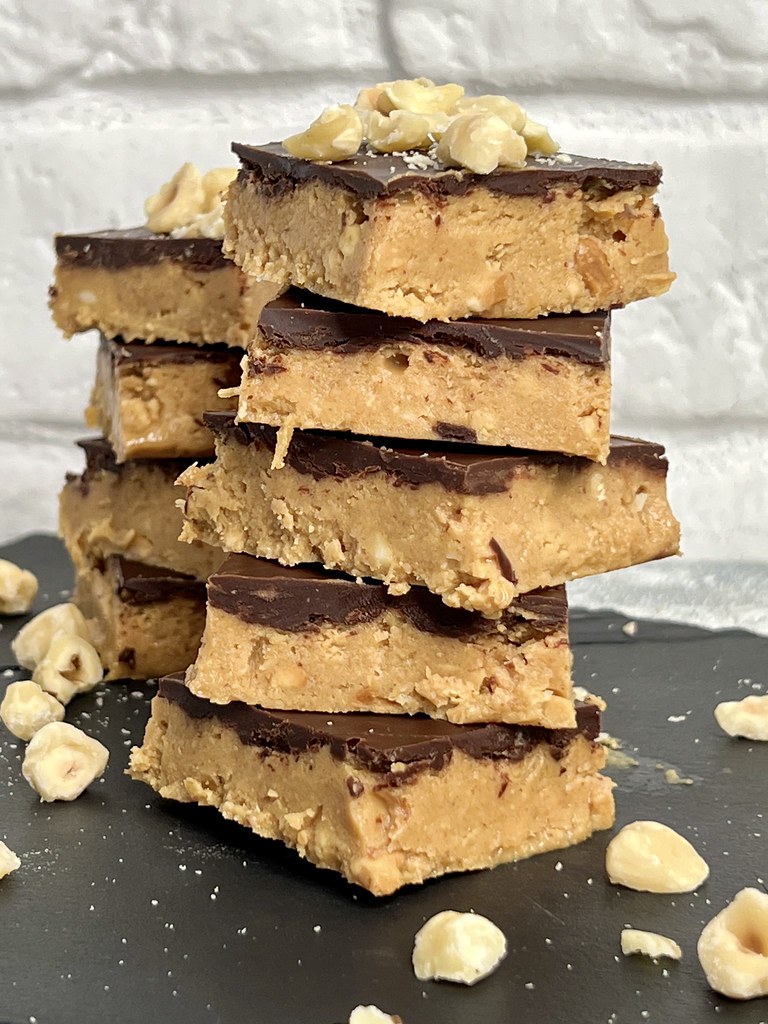
6. **Peanut Butter**Peanut butter holds a special place in many households, revered as a versatile pantry staple cherished for its protein content and healthy fats. It’s a go-to for sandwiches, a robust addition to smoothies, or a satisfying snack straight from the spoon. With its creamy texture and rich flavor, it consistently ranks high on the list of comforting and seemingly wholesome foods, offering sustained energy and satiety.
Yet, this beloved spread isn’t always as innocent as it appears. While natural peanut butter is fantastic, many commercial brands, seeking to enhance flavor and texture, sneak in a significant amount of added sugar and even hydrogenated oils. The CDC explicitly mentions that “even nut butters like peanut, almond, or cashew butter may have added sugars for both flavor and texture.”
It’s a subtle but impactful addition that can turn a nutrient-dense food into another source of hidden sugar. These sugars aren’t just for taste; they contribute to the smooth, spreadable consistency that many consumers prefer. Without careful label reading, you could be regularly consuming more sugar than you intend, thinking you’re sticking to a strictly healthy diet.
To ensure you’re making the healthiest choice, always make it a habit to check the ingredient list thoroughly. Look for brands that list only peanuts (and perhaps a touch of salt) as their ingredients. Opting for natural, unsweetened peanut butter allows you to reap all the protein and healthy fat benefits without the unwanted sugar surge. It’s a small change that can make a big difference in your overall sugar intake.
Read more about: Seriously What Happened? 14 Once-Ubiquitous Snack Brands We Just Don’t See on Shelves Anymore.

7. **Condiments**Condiments are the unsung heroes of many meals, adding that essential zest and flavor that can elevate even the simplest dishes. From dipping fries to slathering on burgers, they’re practically indispensable. They seem so insignificant in quantity, just a dollop here and a squeeze there, that we often overlook their nutritional impact, assuming they’re just flavor enhancers.
However, many common condiments are sneaky, significant sources of hidden sugars, fats, and salt. Chris Henigan, MS, RD, LDN, with Simple Start Nutrition, highlights, “Condiments, specifically BBQ sauce and ketchup, have some sneaky added sugars in them.” Erin Gager, RD, LDN, also warns that “ketchup, barbecue sauce, hoisin sauce, teriyaki sauce, salad dressings and relish all have added sugars that mount up.”
Let’s talk specifics because the numbers can be quite surprising. A single tablespoon of ketchup can contain up to 4 grams of sugar. Now, who uses just one tablespoon of ketchup with their meal? Henigan further reveals that “Two tablespoons of BBQ sauce can contain 12 grams of added sugar, or about 25% of your day’s recommended intake,” emphasizing, “But remember, these are condiments, not even a main part of the meal.” St Luke’s Health reinforces this by stating that “Ketchup tends to have about 4 grams (or about one teaspoon) of sugar per tablespoon.”
Given how liberally these condiments are often used, the sugar content can quickly add up, contributing significantly to excessive sugar consumption without you realizing it. The good news? Henigan suggests that “while there aren’t perfect substitutions for these, both offer no sugar added options, which is a great way to go.” By simply opting for these no-sugar-added varieties, you can continue to enjoy your favorite flavors while dramatically cutting down on hidden sugars.
Read more about: Seriously, What Happened? 14 Food & Dining Trends Gen Z Is Completely Reshaping Right Now.
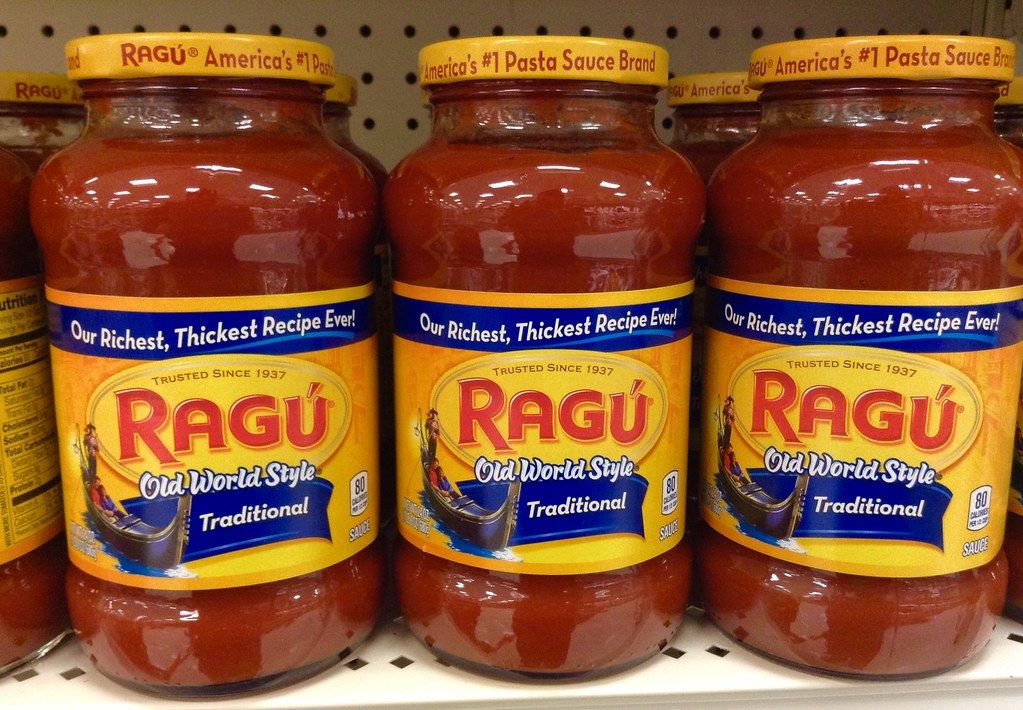
8. **Spaghetti Sauce**Who doesn’t love a comforting bowl of pasta coated in rich, flavorful spaghetti sauce? It’s a weeknight dinner savior and seems like a wholesome base for a nutritious meal, often prepared by simply opening a jar and letting it simmer. It feels like an easy, healthy choice, especially when you’re short on time but still want a satisfying meal.
But hold up, your go-to jarred sauce might be pulling a fast one! Manufacturers often sneak in sugar, not just for taste, but specifically to balance the natural acidity of tomatoes. As Madelyn Fernstrom, PhD, PHD, tells MSNBC, “Adding sugar to tomato-based sauces serves as a flavor balancer.” This means your savory pasta dish could be far sweeter than you expect.
The sugar content in these sauces can vary wildly, making label reading absolutely essential. Fernstrom notes that brands can add “from as little as 3 grams (almost a teaspoon) to 12 grams (3 teaspoons) for a half cup serving.” St Luke’s Health even mentions some tomato sauce can contain “about 10 grams per serving,” while the USDA states a popular brand can contain “up to 18 grams of sugar per cup!” That’s a lot of hidden sweetness.
So, for a healthier choice, consider whipping up your own homemade sauce from fresh ingredients, giving you full control. If convenience is key, become a label detective at the grocery store. Look for “no added sugar” options in the nutrition panel or carefully check the ingredient list for any sneaky sweeteners.
Read more about: Slash Your Grocery Bill by 30%: 11 Life-Changing Hacks You Can Use Today

9. **Flavored Coffee**Ah, the morning ritual! For many, it’s not complete without that perfectly crafted, deliciously flavored coffee drink from their favorite chain. A vanilla latte, a caramel macchiato, or a seasonal spiced frap – these elaborate concoctions feel like a luxurious treat to kickstart the day or for a well-deserved afternoon break.
But here’s the jolt you didn’t ask for: many of these beloved flavored coffee drinks are absolute sugar bombs! It’s not just the coffee you’re sipping; it’s a potent mix of sugary syrups, sweetened creamers, and decadent toppings that transform a simple cup into a serious calorie and sugar fest.
The numbers can be truly staggering, making it crucial to be mindful of what you’re adding to your coffee. The context warns that “Some flavored coffees can contain more sugar than a can of soda!” It’s these flavored sauces and syrups that are the real culprits, piling on the sweetness without you even realizing it, turning your refreshing drink into a sugary treat.
So, how can you enjoy your coffee fix without the sugar overload? The trick is to be mindful of what you’re adding. Consider ordering an espresso or plain black coffee, then add minimal sweeteners yourself, or opt for unsweetened flavorings. This simple adjustment lets you truly savor your coffee without the hidden sugar rush.
Read more about: Seriously, What Happened? 10 Once-Popular Sodas Millennials Are Just Not Sipping Anymore

10. **Breakfast Cereal**For many, breakfast cereal brings back nostalgic memories of Saturday mornings, colorful mascots, and a quick, easy way to start the day. It’s often marketed as a foundational part of a healthy diet, especially when labels boast “whole grain” or “fortified with vitamins.” You think you’re making a smart choice.
However, the cereal aisle is a minefield of hidden sugars, and it’s not just the obvious sugary ones marketed to children. Chris Henigan, MS, RD, LDN, warns that “some seemingly ‘healthy’ cereals can pack a surprising amount of added sugar.” Even cereals that look wholesome can be serious sugar bombs.
Consider this eye-opening example from Henigan: “Take Cheerios Cinnamon Oat Crunch. 1 serving, which is 1 cup, contains 15 grams of added sugar.” Madelyn Fernstrom emphasizes the importance of reading the nutrition label, advising us to “Ignore the words ‘fortified’ or ‘whole grain’ or ‘protein’, which are all unrelated to sugar.” The front of the box can be very misleading!
So, how do you navigate this sugary maze? Henigan suggests looking for cereals with “less than 5 grams of added sugar- like original Cheerios or Shredded Wheat.” Then, you can personalize your bowl by adding natural sweetness with fresh fruit like bananas or berries, giving you delicious flavor without the extra sugar.
Read more about: 13 Simple Ways to Fuel Your Body: A Global Guide to Nutritious Snacking
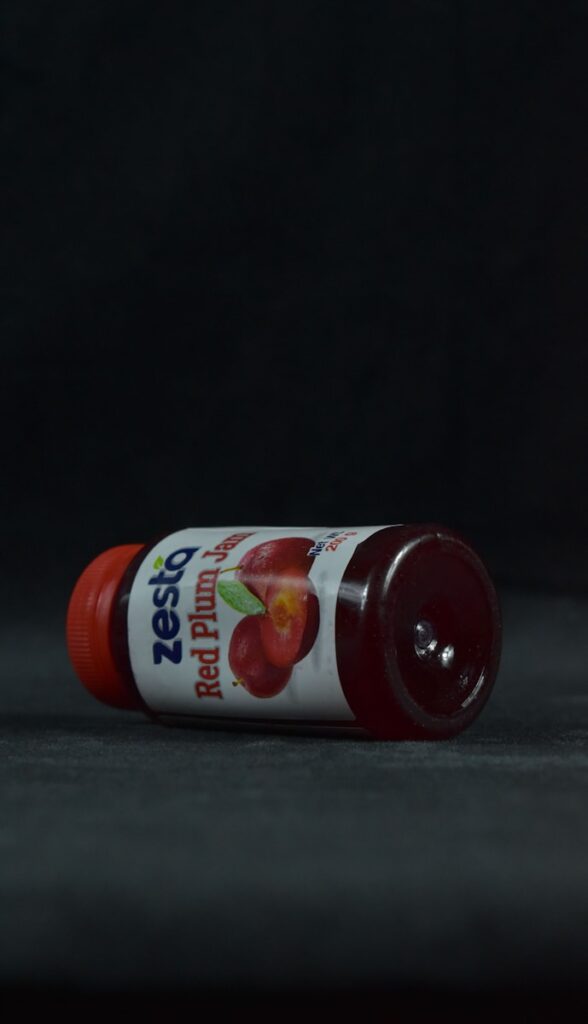
11. **Canned Fruit**When you’re looking for a quick and easy way to add fruit to your diet, canned fruit often seems like a brilliant solution. It’s shelf-stable, convenient, and promises a dose of vitamins, making it a staple in many pantries. It feels like a healthy shortcut, especially when fresh fruit isn’t readily available.
But here’s the sticky truth about many canned fruit varieties: they’re often drowning in sugary syrup! While you might think you’re getting a healthy fruit serving, you’re also getting a hefty dose of added sugar. Even cans labeled “in light syrup” can significantly contribute to your daily sugar intake without you even realizing it.
The CDC specifically advises, “‘Look for fruit canned in juice instead of syrup.'” This seemingly small detail makes a huge difference. When fruit is packed in heavy or light syrup, that additional sugar is absorbed by the fruit itself, turning a nutritious snack into a hidden sugar bomb.
So, to enjoy the convenience of canned fruit without the sugar surprise, always check how it’s packed. Your best bet is to opt for fruit canned “in water or its own juice,” which significantly reduces the amount of added sugar. This simple swap allows you to enjoy the fruit’s natural sweetness and nutritional benefits.
Read more about: Seriously What Happened? 12 Once-Iconic Deli Meats Families Just Don’t Slice Anymore.
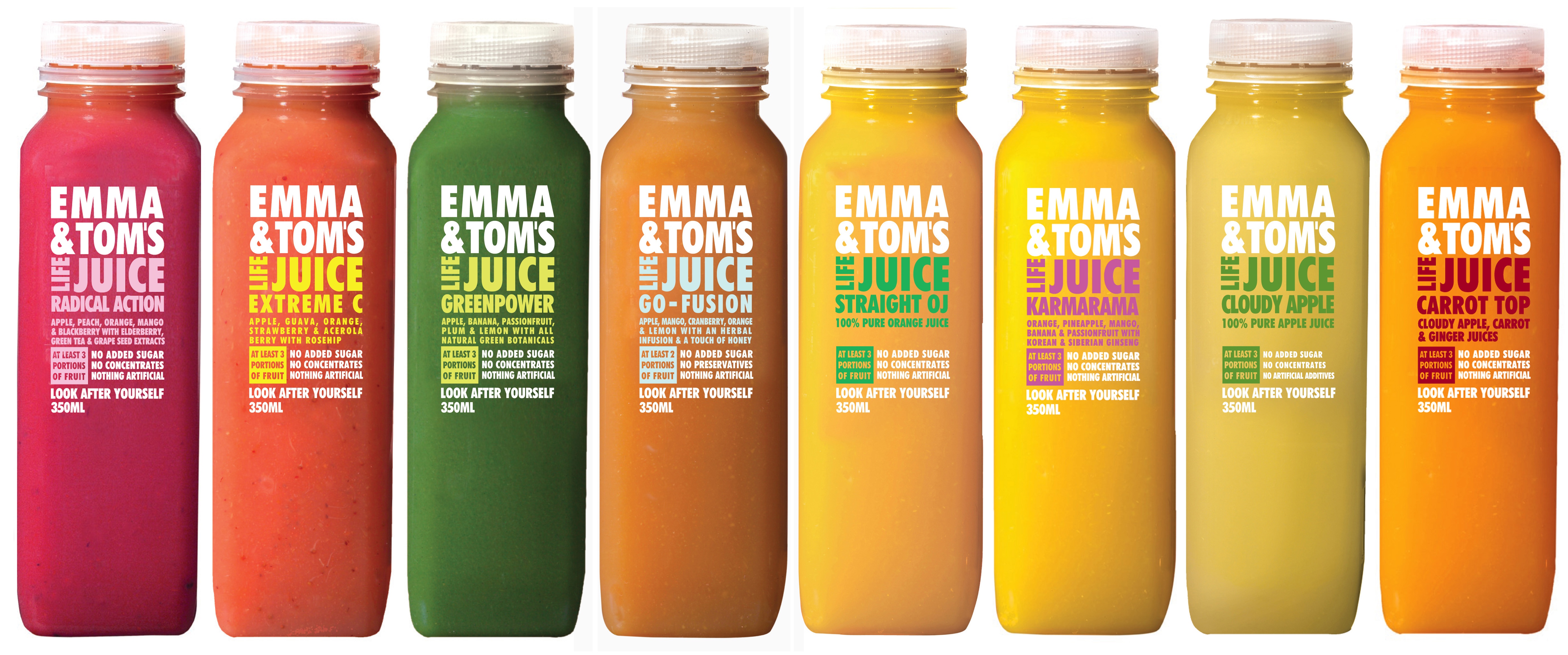
12. **Packaged Smoothies**You’re rushing out the door, grabbing a “healthy” packaged smoothie from the fridge, feeling like a health guru on the go. These vibrant, ready-to-drink blends are often marketed as a nutritious meal replacement or a quick way to pack in fruits and veggies. They promise convenience and a boost of goodness.
But here’s where these seemingly wholesome beverages can trip you up: many packaged smoothies are secretly loaded with added sugars. Manufacturers often include sugar syrups, juices, or even sweetened yogurt to enhance flavor and extend their shelf life, transforming a potentially healthy drink into a sweet deception.
The British Heart Foundation highlights an important point about fruit in general: “If you blend fruit, the natural sugars are released from within the cell walls of the fruit and become ‘free sugars’.” This process, combined with *added* sugars, means that “Some can have as much sugar as a can of soda,” according to the context. That’s a shocking amount of sugar for something you believed was pure health in a bottle!
So, what’s the savvy move? The best way to ensure your smoothie is a truly healthy choice is to make it yourself at home. This way, you have total control over the ingredients, allowing you to avoid those sneaky added sugars and artificial flavorings. Blend up your favorite fruits and veggies for a truly nutritious and refreshing drink!
Read more about: 13 Simple Ways to Fuel Your Body: A Global Guide to Nutritious Snacking
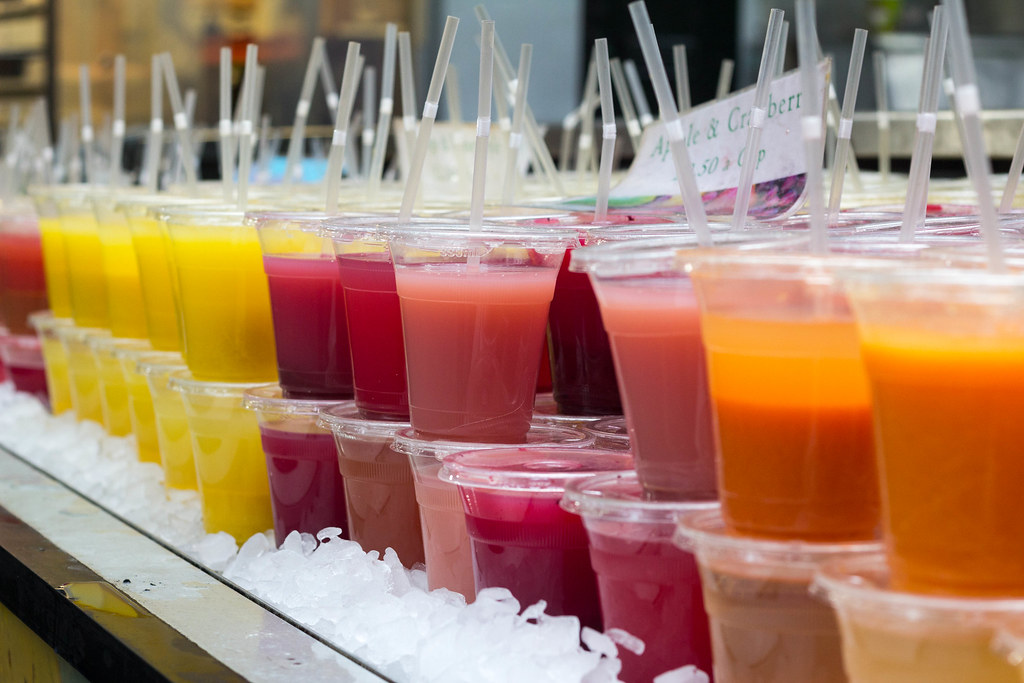
13. **Fruit Juice**Many of us grew up believing fruit juice was the epitome of health, especially those “100% juice” cartons. We’ve been taught to associate it with vitamins and a healthy start to the day, a delicious way to get our fruit servings without the fuss. It’s refreshing, naturally sweet, and feels like a virtuous choice.
But here’s a sour truth: even pure fruit juice, without any *added* sugars, can be a major source of sugar in your diet. The reason? It’s concentrated natural sugar, and it lacks the crucial fiber found in whole fruits. Cara Rosenbloom, a dietitian, tells the Heart and Stroke Foundation of Canada that “An eight-ounce serving of juice and cola both contain about 30 grams of sugar on average.”
When you strip away the fiber, as happens in juicing, you lose the component that slows down sugar absorption in your body. This means “Drinking fruit juice can lead to a quick spike in blood sugar levels,” according to the context. Unlike eating a whole apple, which provides satiety and a gradual release of sugar thanks to its fiber, juice delivers a rapid sugar hit.
So, what’s the smarter sip? While an occasional small glass of 100% juice is fine, prioritize whole fruits. “Consuming whole fruits instead of juice provides fiber and reduces the risk of consuming too much sugar.” You get all the vitamins, minerals, and the vital fiber that promotes digestive health and keeps your blood sugar stable.
Read more about: Seriously, What Happened? 10 Once-Popular Sodas Millennials Are Just Not Sipping Anymore
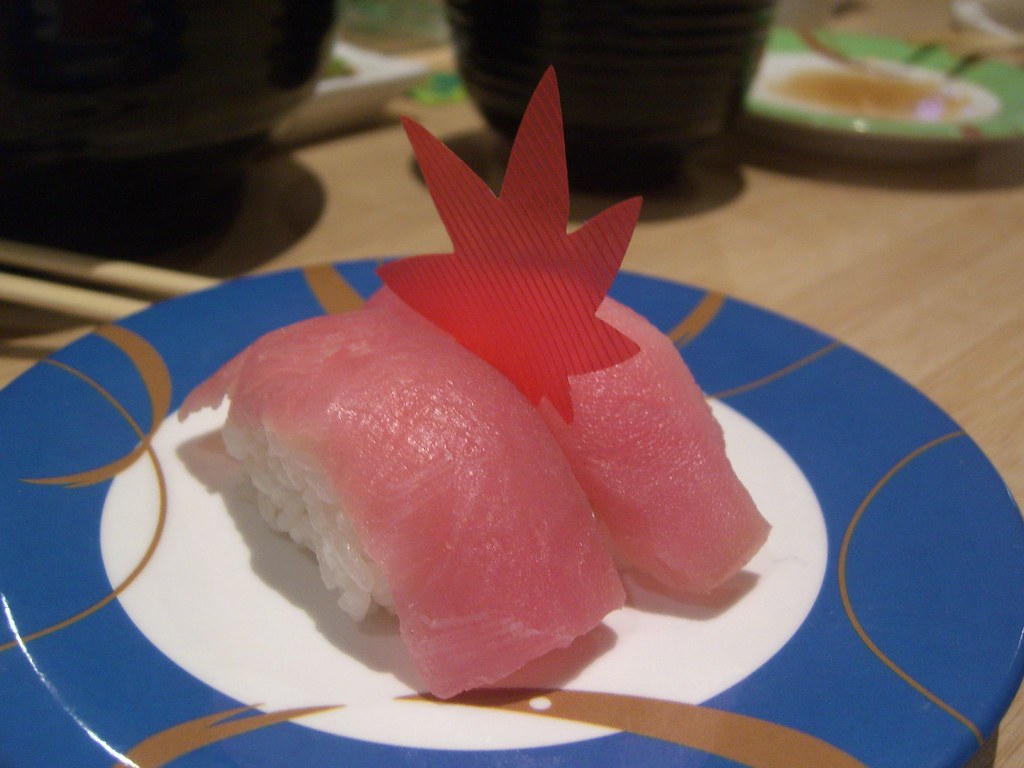
14. **Sushi**Sushi has exploded in popularity, transforming from an exotic delicacy to a mainstream favorite, often seen as the epitome of healthy dining. Delicate fish, fresh vegetables, and artistic presentation make it feel light, clean, and utterly guilt-free. Many turn to sushi for a perceived low-calorie, high-protein meal.
But here’s a secret that might make your chopsticks falter: your favorite sushi rolls can be surprisingly sneaky sources of added sugar! It’s not just about the raw fish; the biggest culprit is often the rice itself. Constance Brown-Riggs, MSEd, RDN, CDCES, CDN, explains in Diatribe that “The rice, which is the main ingredient, is prepared with vinegar, salt, and often added sugar.”
Beyond the rice, many popular sushi rolls feature sauces, glazes, and dressings that are packed with hidden sweeteners. Think of those creamy, spicy sauces or sweet glazes often drizzled over specialty rolls – they might taste amazing, but they’re piling on the sugar without you even realizing it. These delicious additions can quickly transform a healthy meal into a sugar-laden one.
So, how do you enjoy your sushi without the sugar surprise? The key is to be a discerning diner. “Being mindful of the types of sushi you choose and opting for rolls with less sauce” can make a significant difference. Lean into simpler rolls with fresh fish and veggies, and go easy on the added sauces and glazes to keep your meal genuinely healthy.
Read more about: Beyond the Red Carpet: Unveiling the Must-Visit Celebrity-Owned Restaurants Making Waves in 2025
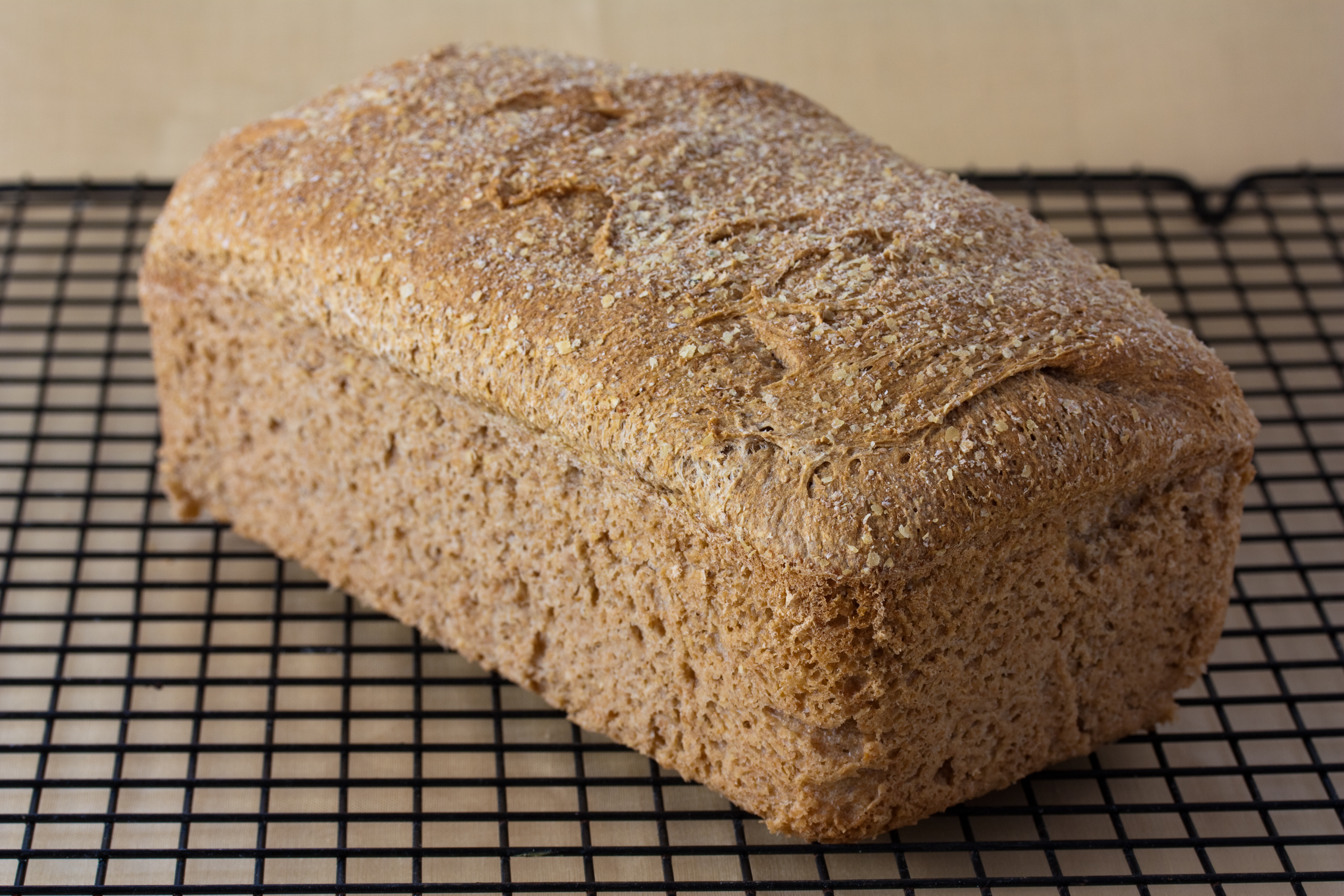
15. **Wheat Bread**For years, we’ve been told to ditch white bread in favor of its “healthier” cousin, wheat bread. It conjures images of wholesome grains, fiber-rich goodness, and a more nutritious choice for our sandwiches and toast. Many of us automatically reach for it, confident that we’re making a smart dietary decision.
But here’s a twist in the tale: not all wheat breads are created equal, and many are secretly packed with sugar! The USMC MCCS explicitly states, “‘Wheat bread is often touted as a healthier alternative, but many brands contain just as much sugar as white bread.'” This is because commercial bakers frequently add sugar to enhance flavor, achieve that perfect texture, and increase shelf life.
You might diligently pick up a loaf labeled “whole grain,” believing you’ve dodged the sugar bullet. However, the presence of “whole grain” doesn’t automatically mean “no added sugar.” Just like with other “baked goodies” that are marketed as healthy, sugar can still be a key ingredient. The USMC MCCS advises us to “Read the label thoroughly, even when buying whole grain, and make sure the ingredients don’t include enriched flours.”
So, to ensure your bread truly contributes to a healthy diet, it’s absolutely essential to become a label-reading pro. Look for whole-grain breads that list minimal ingredients, with no added sugars or high-fructose corn syrup. Choosing carefully means you can still enjoy your sandwiches, knowing you’re truly opting for a nutritious, low-sugar foundation.
Read more about: Unlock Your Pantry’s Potential: 15 Simple Steps to Start Your Food Preservation Hobby
We’ve journeyed through a surprising list of everyday foods, unmasking the hidden sugars that often lurk in plain sight. It’s truly wild how many sneaky places sugar hides, and all the different names it can go by on ingredient labels. But remember, knowledge is power, and now you’re armed with insights that can change your shopping habits for the better. Empower yourself to make informed choices, read those labels like a pro, and savor every bite, knowing you’re nourishing your body and taking control of your long-term health. Here’s to a sweeter life, with less sneaky sugar!

